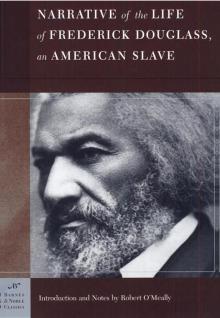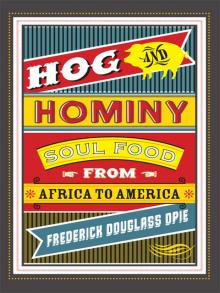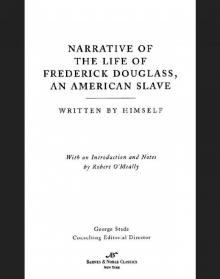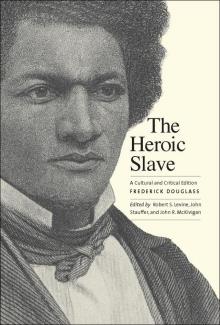- Home
- Frederick Douglass
Hog and Hominy: Soul Food From Africa to America Page 12
Hog and Hominy: Soul Food From Africa to America Read online
Page 12
THE BEANS AND GREENS OF NECESSITY
African Americans and the Great Depression
UNEMPLOYMENT AND JOBS DURING THE DEPRESSION
Migrants from the South and the Caribbean came to New York, Chicago, and other northern cities during the Depression in search of opportunity. In their home regions, they worked most often as agricultural laborers, waiters, domestic servants, and porters. Up north, migrant men gained a foothold in the metalworking, automobile, meatpacking, and construction industries. Women most often worked as domestics and in commercial laundries, and the less skilled branches of the garment industry. Within a given industry, migrants were likely to be assigned the least-paying job on a piecework basis. By 1929, however, New York City, the center of the nation’s wealth and finance, was in economic collapse. Migrants were hit particularly hard because many of the men worked in industries and occupations disproportionably affected by the Depression such as construction and the steel and automobile industries. Another problem was that migrant workers did not have seniority and were clustered in non- and semiskilled jobs; they were thus the first to be laid off when the Depression hit.1 Conditions were only a little more favorable for African Americans in the public sector.
Drake and Cayton argue that the job discrimination in the postal service in Chicago ensured that whites dominated the best positions even though these were federal jobs secured through civil service exams. For example, in the postal service in Chicago in 1930, the largest percentage of African Americans worked as laborers (69.5 percent), clerks (28 percent), and mail carriers (16 percent). In contrast, they made up only a small percentage of the more coveted positions of foremen and overseers (4.5 percent), inspectors (3.7 percent), and managers and officials (1.2 percent).2 Economist William A. Sundstrom, studying unemployment percentages during the Depression, found that in the south blacks and whites had similar unemployment rates but blacks earned much less than whites performing the same kind of work. Moreover, in both the south and the north, females had lower unemployment rates than did males. Most notable is Sundstrom’s finding that “within the North, unemployment rates were 80 percent higher for blacks than whites” and “in [northern] cities black men averaged 50 percent higher unemployment rates than whites.”3
FIGURE 5.1 Unemployed men in front of Al Capone’s soup kitchen, Chicago, February 1931. United National Archives II.
Many struggling migrants from the South and the Caribbean had to eat almost like vegetarians, surviving on produce grown in expanded family gardens. By 1930 most North Americans turned to public and private sources of relief. In New York alone, over fifty breadlines distributed food to the destitute. All over the country, private institutions such as the Salvation Army provided food relief. Organizations less known for altruism also provided relief during the Depression. For instance, Chicago mob boss Al Capone operated a storefront relief kitchen that provided free soup, coffee, and doughnuts to long lines of unemployed men of various ethnicities.4 New York–based evangelist Father Divine, perhaps an equally controversial figure, also fed the poor. The lion’s share of food relief, however, came from local, state, and federal institutions.
Most migrants from the South who arrived in the North before the Depression had experienced noticeable improvements in their access to food luxuries, such as better cuts of meat and more sugar, poultry, and pasta. In contrast, friends and relatives who never left the South had been doing without such items for so long that many claimed to notice little change after the Depression hit. This was especially true in those regions of the South where people fished, maintained vegetable gardens, and kept dairy cows, hogs, and chickens. For southerners, the Depression generally meant the traditional southern African American diet. That diet, however, varied widely across the South and even within each region.
Malcolm J. Miller, the South Carolina administrator for the Federal Civil Works Administration (FCWA), summed up conditions in the South in the era of the Depression: “For sixty-five years the South has been the sweatshop of the nation. That’s because we were afraid of the Negro. We wanted to keep him down—and did. But we dragged ourselves down, too.” In turpentine-producing regions of Georgia, for instance, the FCWA’s Lorena Hickok, a white Midwesterner, observed, “Half-starved Whites and Blacks struggle in competition for less to eat than my dog gets at home, for the privilege of living in huts that are infinitely less comfortable than his kennel.”5
In general, the Depression dried up the economies of many communities. Many turned to the New Deal relief programs started after Franklin D. Roosevelt was elected president in 1932. Federal food relief came in many forms: emergency food stations, surplus food distribution programs, soup kitchens, breadlines, and relief gardens. Vegetables from a relief garden near Greensboro, North Carolina, went toward the mass production of canned soup distributed as relief. New Deal administrators established emergency food stations in communities facing imminent starvation. For instance, in 1938 the staff of an emergency food station in Cleveland, Ohio, passed out oranges, apples, and a pound of rice to starving residents.6 According to African American singer and composer Nina Simone, the arrival of New Deal relief programs saved her tourism-dependent hometown of Tyron, North Carolina, from becoming a ghost town.7
THE SOUTH DURING THE DEPRESSION: FARMING AND BARTERING
In 1933 the Federal National Relief Agency (NRA) chose Tyron for one of its surplus food distribution program area depots. According to Lorena Hickok, the federal government ran into problems with its surplus food distribution program. States with an abundance of an item would often continue to receive shipments of it while having difficulties getting what they lacked. This was the case with oranges in South Carolina and pork in Daytona Beach, Florida, where residents already ate too much of these foods.8 Problems notwithstanding, however, many survived the Depression on government relief rolls and jobs with the NRA. Nina Simone’s father and other men in Tyron received NRA truck-driving jobs. “Not only did the men at the depot get given a little extra food to take home, but the drivers built up a network of people who would trade food among themselves,” Simone recalls. Families would trade what they raised in excess in their gardens as well as surplus food they received on the job. Drivers traded spare “collard greens, string beans, tomatoes and sometimes eggs” with drivers who had “more sugar or flour, say, than they needed.”9
Some individuals depended on a combination of government relief and their own efforts. For example, many African American women worked as domestics, earning shamefully low wages. As one historian describes, “it was not at all unusual for them to ‘tote,’ that is, to bring leftovers from their employer’s house home with them. When these women planned the meals, as they often did, the leftovers might be of good quality and considerable quantity.”10 In Savannah, Hickok observed, “if you hire a cook down here, that means you take on the job of feeding, not only the cook, but her whole family,” because, before they go home, they “clean out your ice box every night.” White patrons became so accustomed to this that they did their shopping and “marketing with that in mind. It’s considered just as regular as tipping a waitress in Childs’ [restaurant] in New York.”11
During the Depression, Nora Burns White grew up on a farm, spending mealtimes sitting around the table with five siblings, the children of her oldest sister, and “somebody that just happened to be there at dinner time. . . and if any body came down at dinner time they sat down and ate.”12 As the child of a tenant farmer in South Carolina, White procured at least one big meal a week by wandering over to the landlord’s door about a block away at mealtime on Sundays to take advantage of his southern hospitality.
White recalled, “I had a thing on Sundays. . . when the family would come to eat and I would be outside at our house I would be watching for the cars to come.” Jokingly, she says, “I was always a greedy person.” The water pump for both houses was naturally next to the landlord’s house. So she would time her trip to the water pump based on when the land
lord’s family, the Rosses, were seated to eat their Sunday meal. “I would sit my pail down at the pump and go on up to the kitchen and open the door and say ‘good evening.’ Mrs. Carrie Ross would say, ‘come on in Nora, sit over here.’” Nora would sit down to a typical Sunday meal in South Carolina: collard greens seasoned with salt pork, peas and rice, corn bread, ham, and fried chicken. “I’d get up when I was finished and say ‘thank you ma’am,’ get the pail of water, and go on home.” This went on for years during the Depression before her mother figured out what was going on. “It seemed like their food was better. . . the best corn bread.”13
FIGURE 5.2 Federal food surplus distribution in Cleveland, Ohio. AP Image Collection.
In addition to feeding the children of their tenants, some southern planters provided meals for their black laborers. For example, Monday through Saturday Carrie Ross distributed freshly baked corn bread and coffee to the black farmhands that worked for the family in Blaney, South Carolina. As a result, Ms. Carrie became an expert at baking large batches of mouth-watering corn bread.14 Similarly, in Alabama, the parents of Jim Warren, born in 1925, regularly fed black hands on the family’s cotton farm near Birmingham. “They would sometimes come in for dinner on Sundays. They would always ask mom to cook black-eyed peas.”15 During the Depression, it seems, southern hospitality prevailed over jim crow in the lives of some southern whites who cooked for and ate with the African Americans they knew intimately.
During the Depression, families also adapted their cooking to both lean times and the short periods of feasting that followed the arrival of state aid, bartered items, the harvest from a garden, or a hog killing. Nina Simone recalled that her family transformed a big garden into “a huge garden and finally a little farm. We had hogs, chickens, and a cow. Rows and rows of string beans, collard greens, tomatoes, corn and squash.” During extremely hard times, her mother made vinegar pies out of apple cider vinegar and dough. She also prepared a lot of dumplings, an occasional chicken, and a “ton of beans.” After a winter hog killing, the family gorged on salted, smoked, and roasted pork, served with dishes such as rice pudding, brown betty (baked pudding), and plenty of canned vegetables. “For the next few days the kitchen was filled with sausages, sweetbreads and hanging roasts and there was pork crackling with every meal.”16
Those fortunate enough to have a subsistence farm carried on business as usual, and a handful of southerners even went through the Depression without the need for government relief. One was civil rights leader Ralph David Abernathy, who recalled his childhood as the son of an independent black farmer in Marengo County, Alabama, about ninety miles southwest of Montgomery. During the Depression, Abernathy’s father took care of his family’s food demands first, raising cattle, hogs, chickens, corn, and other produce; in addition, he raised 100 to 150 bales of cotton, which he sold at market. He killed thirty to forty hogs a year, maintaining a smokehouse filled with curing hams, and his farmhands preferred receiving pay in “hams rather than in cash because the hams were better than any you could buy.” In addition to hams, the Abernathys went through the Depression regularly consuming beef, poultry, and milk, all of which were rare for most U.S. citizens. They also bartered eggs to the owner of the community country store in exchange for other food supplies like salt, flour, and sugar.17
Similar to Nina Simone’s mother, Abernathy’s mother furnished the family table with produce in season from the truck garden along with the meat and poultry the family raised. She spent hours canning corn, beets, tomatoes, black-eyed peas, beans, potatoes, sweet potatoes, squash, okra, collard greens, turnips, and mustard greens. She also canned peaches, plums, pears, figs, and apples from the family orchard. The laborious job ensured that “we had enough to eat in the winter, when most of the fruits and vegetables had to come out of a jar.” Abernathy recalls, “On Monday, Tuesday, Wednesday, Thursday, and Friday, we would have ordinary meals—one meat, three or four vegetables, corn bread, butter, maybe some preserves, plenty of milk. And Saturday—well, that was a day when everyone was busy with special tasks. . . on Saturday we were lucky to get leftovers.” Subsistence farming, money earned from cash crops, and frugality permitted the Abernathys to meet the basic necessities of a family with twelve children. Consequently, Ralph Abernathy recalls, “Everything I learned about the Great Depression was from a college textbook.” 18
Maya Angelou’s grandmother operated a country store in Stamps, Arkansas. Like Mr. and Mrs. Abernathy, Angelou’s grandmother used a combination of store profits, bartering, subsistence farming, and the preparation of nitty-gritty, good-tasting food to survive the Depression with dignity. In Stamps, Angelou writes, “the custom was to can everything that could possibly be preserved. . . . Throughout the year, until the next frost, we took our meals from the smokehouse, the little garden that lay cousin-close to the store, and from the shelves of canned foods.” The family pantry shelves, in her words, “could set a hungry child’s mouth to watering. Green beans, snapped always the right length, collards, cabbage, juicy red tomato preserves that came into their own on steaming buttered biscuits, and sausage, beets, berries and every fruit grown in Arkansas.” During the Depression, her grandmother twice yearly supplemented the preserves and smoked meat with fresh liver purchased from a local white butcher with pennies, nickels, and dimes. “Since the whites had refrigerators, their butchers bought the meat from commercial slaughterhouses in Texarkana and sold it to the wealthy even in the peak of summer.”19 In contrast, in New York during the Depression most people barely made it, and blacks fared the worst. “There were very difficult times in Harlem during the 1930s,” recalled longtime Harlem resident Rudolph Bradshaw.20
HARLEM DURING THE DEPRESSION
Even before the 1930s, the majority of Harlem’s African American and Latin American residents lived on the margins. This was because white racists in New York City, who owned most of Harlem’s banks and profitable businesses, worked to ensure the underdevelopment of the city’s nonwhite (and non-Protestant) residents. For example, the owners of pharmacies, department stores, and restaurants refused to fill the more prestigious jobs in their businesses with African Americans and Latinos, and landlords and food merchants charged nonwhites higher prices for inferior living spaces and food. During the Depression, then, tough times only got tougher for African Americans in Harlem.21
To make ends meet, African Americans turned to strategies like rent parties. On a Saturday night during the Depression, one could always find buffet flats, rent parties, whist parties, and dances, where, for a small fee, one could purchase down-home food and dance to good music. Langston Hughes recalled: “The Saturday night rent parties that I attended were often more amusing than any night club, in small apartments where God knows who lived—because the guests seldom did—but where the piano would often be augmented by a guitar, or an odd cornet, or somebody with a pair of drums walking in off the street. And where awful bootleg whiskey and good fried fish or steaming chitterling were sold at very low prices.”22 The host of a party advertised an event by sticking brightly colored cards into the grilles of apartment house elevators. Some of the announcement cards were quite comical:
RIBBONS-MAWS AND TROTTERS A SPECIALITY
FALL IN LINE, AND WATCH YOUR STEP, FOR THERE’LL BE LOTS OF
BROWNS WITH PLENTY OF PEP AT
A SOCIAL WHIST PARTY
GIVEN BY
LUCILLE AND MINNE
149 WEST 117 STREET, N.Y. GR. FLOOR, W,
SATURDAY EVENING, NOV. 2ND 1929
REFRESHMENTS JUST IT MUSIC WON’T QUIT23
Philadelphia rent parties were similar to those in Harlem. The family in need got the word out and then went to work preparing food for the event. Meanwhile, residents in the surrounding area scrounged enough money to buy a plate of food and prevent someone from being evicted. For very little money you could get homemade sweet potato pie, greens, and fried chicken, or fish, or some part of the hog. The type of meat you selected determined the cost of y
our plate. A bottle of Tabasco sauce and salt and pepper would be available to spice up a plate of food overflowing with warm “pot-likker” (the liquid produced when cooking salt-pork–seasoned greens).24
FATHER DIVINE’S PEACE CENTER AND NAZARETH MISSIONS
Every Sunday Father Divine (aka the Reverend General Jealous Divine; aka George Baker) fed starving interracial groups by the hundreds for free in Harlem, while many other black preachers ignored their flocks’ hunger pains. Most African American urban clergy avoided sermons that addressed racism, poverty, and the social conditions of blacks in America. Instead, their sermons focused on life after death and the need for spiritual conversion. Father Divine talked about conversion, but he also denounced racism and the inability of a country blessed with material abundance to feed its citizens.25
Divine was a migrant from the Deep South (possibly the Carolinas or Georgia) with a refined southern accent. He married white women and displayed “undiminished prosperity” during the Depression. Divine became famous for hosting banquets that fostered interracial dining.26 White historian Carleton Maybee, who was a doctoral student in the history department at Columbia University during the Depression, recalled that “whereas other churches had seven sacraments, Father Divine had only one, eating together with other people.” In short, he regarded his interracial banquets as Holy Communion. “Father Divine was extremely well known during the 1930s by the whole country for feeding people for free if they could not afford food.” Opposed to any kind of racial segregation, Divine drew large crowds of blacks to his Harlem locations, “with a sprinkling of whites.” In fact, Columbia University students and faculty quite often went to the banquets, says Maybee.27

 Narrative of the Life of Frederick Douglass: An American Slave
Narrative of the Life of Frederick Douglass: An American Slave My Bondage and My Freedom
My Bondage and My Freedom Two Slave Rebellions at Sea
Two Slave Rebellions at Sea The Color Line in America
The Color Line in America The Negro Exodus from the Gulf States
The Negro Exodus from the Gulf States Hog and Hominy: Soul Food From Africa to America
Hog and Hominy: Soul Food From Africa to America Narrative of the Life of Frederick Douglass
Narrative of the Life of Frederick Douglass![An Appeal to Congress for Impartial Suffrage [a machine-readable transcription] Read online](http://i1.bookreadfree.com/i/03/23/an_appeal_to_congress_for_impartial_suffrage_a_machine-readable_transcription_preview.jpg) An Appeal to Congress for Impartial Suffrage [a machine-readable transcription]
An Appeal to Congress for Impartial Suffrage [a machine-readable transcription] The Color Line
The Color Line My Bondage and My Freedom (Penguin Classics)
My Bondage and My Freedom (Penguin Classics) The Heroic Slave
The Heroic Slave